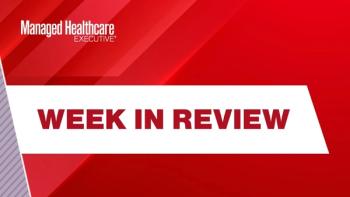
- Managed Healthcare Executive August 2019 Issue
- Volume 29
- Issue 8
New Report is Tackling Workplace Opioid Abuse
The first step to addressing opioid abuse for employers is to identify potential misuse and addiction.
Each year there are more than 17,000 deaths nationally from prescription opioid overdoses,
In response to the local and national ongoing opioid epidemic,
Launched on July 11, 2019, FCH’s Workforce Prescription Opioid Use Report, is offered free of charge to employers in the Puget Sound area with over 200 employees until Sept 15, 2019. The report will help identify high rates of opioid use, which can be associated with potential misuse and addiction among employees.
Once initiated, the employer will instruct their pharmacy benefits manager (PBM) to send their pharmacy claims to FCH to be analyzed. This extracted information will be de-identified with no personal health information and is completely HIPAA-compliant.
Related article:
The program is a follow up to its
“We are constantly innovating our application of data to help create healthier workforces, while responding to our society’s most serious health concerns,” says John W. Robinson, MD, chief medical officer, FCH. “Opioids are at the top of that list. We are implementing this workforce prescription opioid use report as a community service to help employers recognize if they have an opioid problem in their workforce.”
Robinson is a member of the
In 2017, the Bree Collaborative produced the
Actuarial consulting firm Milliman participated in this project by verifying the analytic code used to compute the results for the report. (The report results will be strictly workforce aggregate, and there will not be any individual employee results.)
- Metric 1: Percentage of patients prescribed any opioid by age group
- Metric 2: Percentage of patients prescribed chronic opioids (60 days of opioids in one quarter)
- Metric 3: Percentage of patients prescribed chronic opioids and sedatives together
- Metric 4: Percentage of new member's day supply of first opioid prescription which are greater than 14 days
FCH’s
Once those at risk have been identified, FCH’s medical and behavioral health case managers will reach out to the employees and confidentially discuss their prescription use and treatment options, which may include alternative pain management or counseling. The entire program is confidential but gives employers more tools to help employees in need without specifically identifying them.
“This program is aimed at reducing opioid misuse and abuse in the workplace, which can affect productivity, absenteeism, health, and safety,” Robinson says. “Following that launch, we started receiving inquiries from employers-who weren’t our clients-asking how they could get this report. That gave us the final push to launch this program in an effort to support our community. We created a simpler screening opioid use report that we could offer to community employers with at least 200 employees, which would only require pharmacy claims from the PBM. The results contain no employee names or identifying information.”
This model is applicable to any health plan or TPA, according to Robinson. To conduct this four-measure screening report on workforce prescription opioid use, FCH needs the health plan/TPA to provide a signed Data Use Agreement and the PBM to provide the de-identified pharmacy claims extract with just seven claim fields.
While this is a program for the Seattle region, it’s a unique initiative that could provide a blueprint for other health care organizations aiming to tackle this problem throughout the country, according to Robinson.
“Depending on the response from the community, this program could be rolled out to other communities and other states,” he says.
Articles in this issue
over 6 years ago
How Mentors Inspire Health Execsover 6 years ago
14 Ways Insurers Can Improve Patient Experiencesover 6 years ago
The Future of Healthcare Wearablesover 6 years ago
Telemedicine and E-Visits: An Updateover 6 years ago
What’s New in the MS Drug Pipelineover 6 years ago
Drug Price Reform Takes Off in 2019over 6 years ago
What Does Simple and Affordable Healthcare Look Like?over 6 years ago
Uniting Determinants and Data for Population Healthover 6 years ago
Top 3 Issues for Hospital Executivesover 6 years ago
Top Payer Growth StrategiesNewsletter
Get the latest industry news, event updates, and more from Managed healthcare Executive.

















































